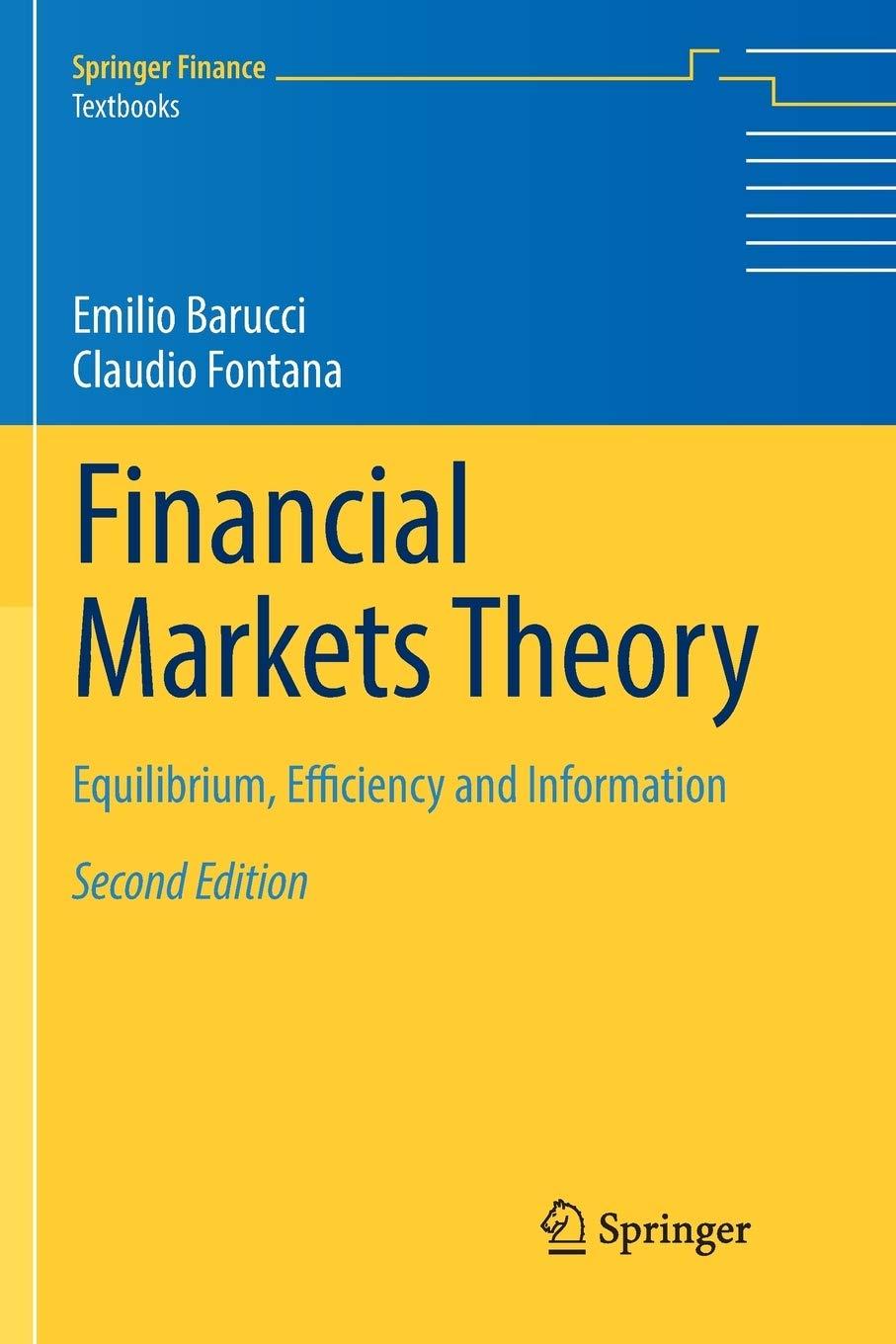Let us consider a multi-period economy (t=0,1, ldots, T) with two assets: a risk free asset, whose
Question:
Let us consider a multi-period economy \(t=0,1, \ldots, T\) with two assets: a risk free asset, whose price is given by \(B_{t}=r_{f}^{t}\), for all \(t=0,1, \ldots, T\), with \(r_{f}>0\) being the risk free rate of return, and a risky asset with price process \(\left(S_{t}\right)_{t=0,1, \ldots, T}\). We assume that, at any date \(t=1, \ldots, T\), given the price \(S_{t-1}\) at the previous date \(t-1\), the risky asset can take the two possible values \(S_{t-1} u\) and \(S_{t-1} d\)
with probabilities \(p\) and \(1-p\), respectively (this represents a special case of the multi-period binomial model presented at the end of Sect. 6.3). Consider an optimal investment-consumption problem of the type (6.6) with consumption only at the terminal date \(T\), i.e., the agent is interested in maximizing \(\mathbb{E}\left[u\left(W_{T}\right)\right]\) over all selffinancing trading strategies \(\left(\theta_{t}\right)_{t=1, \ldots, T}\). Prove the following claims:
(i) if \(u(x)=\sqrt{x}\), then the value function introduced in (6.9) is given by \[V(x, t)=c^{T-t} \sqrt{x}, \quad \text { for all } t=0,1, \ldots, T \text { and } x>0,\]
for a constant \(c>0\), and the optimal number of units of the risky asset is given by \[\theta_{t}^{*}=K \frac{W_{t-1}}{S_{t-1}}, \quad \text { for all } t=1, \ldots, T\]
for a constant \(K \in \mathbb{R}\) which can be explicitly computed.
(ii) If \(u(x)=\log (x)\), then the value function introduced in (6.9) is given by \[V(x, t)=c(T-t)+\log (x), \quad \text { for all } t=0,1, \ldots, T \text { and } x>\]
for a constant \(c>0\), and the optimal number of units of the risky asset is given by \[\theta_{t}^{*}=K \frac{W_{t-1}}{S_{t-1}}, \quad \text { for all } t=1, \ldots, T\]
for a constant \(K \in \mathbb{R}\) which can be explicitly computed.
(iii) If \(u(x)=x^{\gamma} / \gamma\), with \(\gamma \in(0,1)\), then the value function introduced in (6.9) is given by \[V(x, t)=c^{T-t} \frac{x^{\gamma}}{\gamma}, \quad \text { for all } t=0,1, \ldots, T \text { and } x>0\]
for a constant \(c>0\), and the optimal number of units of the risky asset is given by \[
V(x, t)=c^{T-t} \frac{x^{\gamma}}{\gamma}, \quad \text { for all } t=0,1, \ldots, T \text { and } x>0\]
for a constant \(c>0\), and the optimal number of units of the risky asset is given by \[\theta_{t}^{*}=K \frac{W_{t-1}}{S_{t-1}}, \quad \text { for all } t=1, \ldots, T\]
for a constant \(K \in \mathbb{R}\) which can be explicitly computed.
Step by Step Answer:

Financial Markets Theory Equilibrium Efficiency And Information
ISBN: 9781447174042
2nd Edition
Authors: Emilio Barucci, Claudio Fontana





